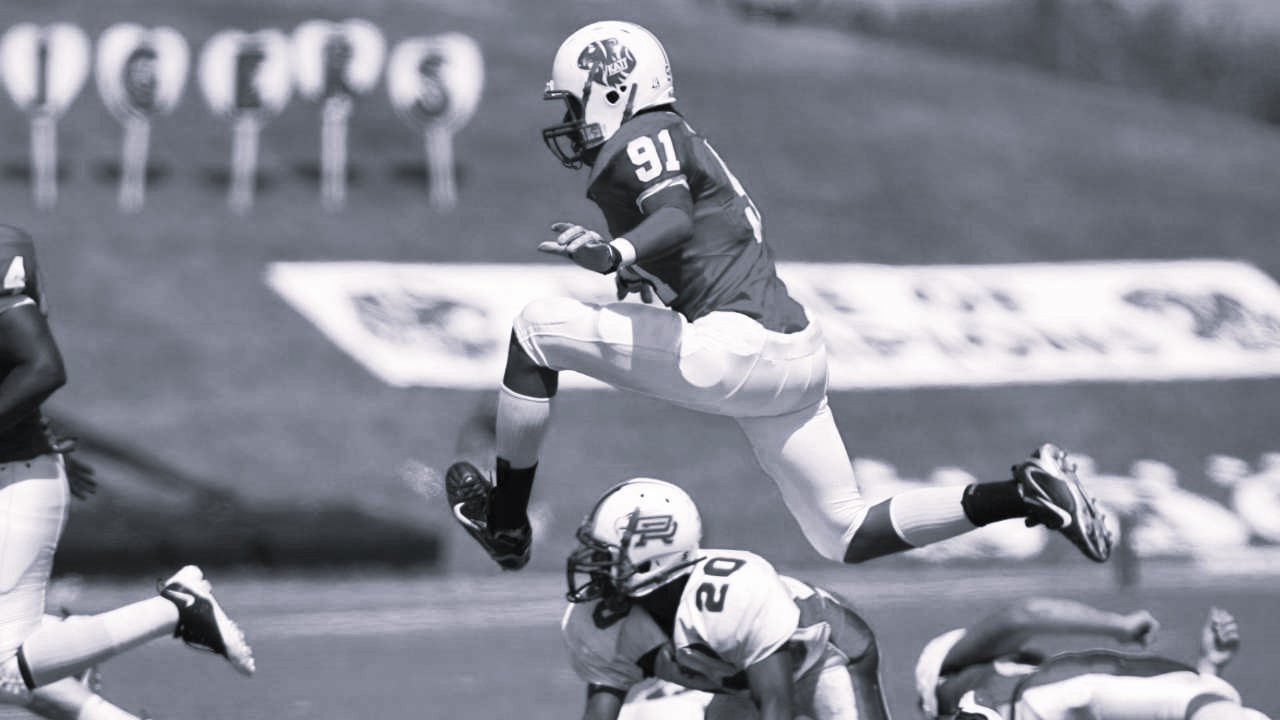Explore the exciting world of 1920s American Football on our website. Learn about the history, players, and iconic moments of this golden era in sports.
Introduction to 1920s American Football
The era of the 1920s became a turning point in the history of American football. The period saw this game change from an obscure pastime to a professional sport that was widely watched by many people. After World War I, America desired entertainment again, and football was the answer to their prayers. This essay will look at various aspects of 1920s American football from its inception through prominent personalities and teams, rulemaking, innovations, and its impact on today’s NF rulemaking Pro Football in the 20s
Professional football came into being as we know it in the twenties. Before this decade, there were only amateur teams that played football with no organizational structure like what we have today. In 1920 team owners formed the American Professional Football Association (APFA) which would later turn into National Football League (NFL). This step marked increased professionalization of sport paving way for future growth and prosperity.
Game Changers
Imagine if you can: it is not yet today’s dominant force – only an experimental league called National Football League (NFL), set up by some individual team owners risking everything for financial gains. Here on this blog post we’re going helmet head deep into that era, where amateurism turned pro.
[ez-toc]
Evolution of The Game
From Leatherheads to Modern Titans
Football was at a crossroads in the twenties. Departing from the leatherhead age, which was defined by iconic helmets made out of leather, modernity emerged instead. Knowledge about sports science, technology advancement and fast growing fans were changing what constitutes the fast-growing Rules were codified and refined; strategies shifted while morality changed within sport.
Prologue to Pro Football
This decade hailed professionalism in the sports industry. Teams sprang across the East Coast, West Coast, and Midwest, resulting to intense rivalries developed between them and also regional fandoms. During this time, such storied franchises as Green Bay Packers and Chicago Bears were created while legendary players like Red Grange became celebrities by showcasing the commercial potential of football.
[ez-toc]
Football Business
Show Me the Money
The 1920s were not only about playing football; it was about finding ways to maintain it. Teams were struggling for money, and the NFL had to consider how best to rationalize its model. Franchising brought some stability while broadcasting rights gave a hint of what lay ahead – though still a nascent stage.
The Rise of the NFL
By the end of the 1920s, however, the NFL was on more solid ground. Rival leagues failed in their bid to knock off the league, which was now poised for explosive growth. The twenties were when football stopped purely being a spectacle and became a product that could be sold, marketed, and consumed.
1920s American Football’s Key Figures and Teams
The 1920s were characterized by the rise of several notable personalities and teams that had a considerable effect on the sport. One of the most influential figures in this age was George Halas, who co-founded the Chicago Bears and became one of the most successful coaches in the history of the NFL. His innovative methods and relentless pursuit of perfection set standards for future generations of coaches and players.

Credit: www.pexels.com
Other remarkable sides and players existed during these times, including Curly Lambeau’s Green Bay Packers. This laid down to their current dominance where they established themselves as a powerhouse under Lambeau’s stewardship. There were also players like Red Grange popularly known as “Galloping Ghost” who demonstrated extraordinary athleticism and skill to enthralled audiences.
Then and Now
Identity Crisis
Fundamentally, football in the 1920s differed from its contemporary version. This is because, whereas today’s game has become reliant on forward passing, which is no longer seen as an exception, back then, it was an innovation that was not used often since it posed much jeopardy. Back then, helmets offered little protection apart from leaving laces imprinted on foreheads such that many American footballers still exhibit traces or wrinkles called helmet hair.
What ties these events together
However, despite all these changes there are certain aspects of modernity that can be traced back to this era. The present structure and format of the NFL can be traced back to its twenties roots. Work ethic and strategy sharing, among others, remain relevant then as of now, implying that there are some enduring elements of football across centuries.
Changes in rules and innovations in the 1920s
There were significant rule amendments and innovations concerning American football during the 20th century, especially in the 1920s. One outstanding change involved the introduction of a forward pass into the games, which had never appeared before. Prior to the 1920s, forward passes were seldom attempted due to their risky nature, making it an unusual play. With these rules, the game became more exciting and dynamic, thereby changing all the strategies of attack.
Another innovative step made during this period was coming up with a 10-yard first-down rule. This transformed the sport by providing teams with objectives and increasing levels of strategy. It also reduced the recurrence of injuries since it discouraged constant brute force plays.
The Impact of the 1920s on American Football’s Future
American football in the years that followed owes much to what happened during the 20th century particularly in its second decade. Firstly, it is vital to note that those ten years saw NFL established as well as other changes meant to affect how people played the sport for many decades to come. Football gained more popularity over this period whereby there were larger crowds attending matches and increased media coverage. The rise of American football began in the 1920s, which consequently made it America’s favorite pastime.
Some Notable Matches and Moments In American Football in the 1920s
Many games and moments from this period are now mythical because they are unforgettable in the history books of American football in the 1920s. The NFL Championship Game between the Chicago Bears and the New York Giants in 1926 is one example of such a game. Being called “Sneakers Game,” feet-hold was gained by putting on sneakers on frozen ground. This tactical footwear enabled the Bears to outplay opponents, leading to an overwhelming win, hence immortalizing this match within football folklore forevermore.
Another iconic moment in the 1920s was Red Grange’s debut with the Chicago Bears. In 1925, Grange, a college football star, signed for the Bears at a then-unheard-of $100,000. His first game saw 36,000-plus spectators attending to watch him play and marked the new age of football celebrity and commercial success.
Challenges and Controversies in American Football in the 1920s
It is evident that despite its rapid rise and popularity during this era, there were so many challenges and controversies surrounding it. Regrettably, lack of uniformity in rules marred this sport, thus resulting in frequent disputes amongst teams. Furthermore, safety concerns over players’ welfare, among others, were also raised, as well as calls for stricter implementation of rules.
One of the crucial scandals of that time period was the “Pottsville Maroons Incident” (1925). The title of NFL champion was taken from them after they had an unauthorized playoff game against Notre Dame All-Stars. This controversial decision caused an uproar among fans who wanted transparency and justice in league affairs.
Modern NFL through American Football in the 1920s
The legacy of American football for the entire duration of 1920s lies everywhere within the present day NFL. The formation of APFA which later became NFL laid a solid foundation upon which further growth took place leading to where it is now. A majority of rule changes brought forth during this period remain part of today’s game like forward pass or ten yard first down rule.
Additionally, one cannot underestimate how much cultural influence came about through American football in the 1920s. For instance, it served as a national emblem representing unity and pride at a time when America was under under socio economic transformations. Its passion still exists to date in its fans; most historical franchises continue to thrive while some traditions exist, thereby making it a beloved institution worldwide.
Cultural Importance: To wrap up, 1920s American football is much more than just a sport.
Cultural Significance of American Football in the 1920s
Apart from its direct implications on football itself, the influence of 1920s American football goes beyond that. This decade saw football explode as a national phenomenon that swept the country and captured hearts nationwide. The game became symbolic of America, reflecting her values and aspirations emphasizing competition, teamwork, and never giving up.
Besides, in the progression towards racial equality in America, 1920s American football played a role too. Though there was still prevalent segregation across many aspects of society, it gave African-American players the possibility to showcase their skills and challenge the stereotypes that persisted at those times. People like Bobby Marshall, together with Fritz Pollard, blazed a trail for future generations of African-American athletes, opening doors for more inclusivity within this sport.
Activities
This part has three major activities;
- Research and create a timeline of the key events and milestones in the NFL during the 1920s
- Host a viewing party for classic football games from the 1920s such as the first NFL championship game between Chicago Cardinals versus Decatur Staley’s (now called Bears) which happened in 1920.
- Create a mock draft for an all-star team made up of players from the twenties and compared it to a modern all-star team. Discuss similarities and differences related to playing styles, strategies, or cultural significance.
- Write short story or fictional account set in world of twenties football that uses real life events/players from era depicted above.
- Create a debate on whether or not some particular controversial laws and tactics from the 1920s should continue to be applied in modern football. Research and gather supporting information.
- Make a mini-documentary that talks about a particular team or player from the 1920s, focusing on their effect on the game as well as their enduring relevance.
- Go to a local football museum or exhibit and concentrate your learning on more information about what happened during the 1920s period which had an influence into today’s game.
- Take part in community service that upholds the memory of football during the early 1920s, e.g., organizing fundraising for neighborhood youth football project or planning charity event with them in mind.
- Find someone who has knowledge of football in the twenties, interview this person, and produce oral history documentation that will capture their memories.
- Write a letter to your favorite NFL team appreciating its past, mentioning something about development of American football during twentieth century’s second decade and how it is played now.
FAQ
What were some big rule changes for American Football during the 1920s?
America’s soccer dynasty underwent several major adjustments throughout this era. The key modifications included making forward passes legalizing hash marks onto playgrounds along with passing roughing penalties.
How did American Football playing style change during the twenties?
During this time, American Football became more fluid and open-ended. Its response was facilitated by introducing forward pass play, which allowed much scoring via throw-ins, making it more enjoyable for spectators.
What were some of the major advances in equipment and facilities for American football during the 1920s?
More protective gear like helmets and pads came into existence in this period. Also, the construction of special-purpose American football fields was emphasized to improve conditions for both players and spectators.
How did American Football’s popularity grow throughout the 1920s?
The 1920s stands out as a major landmark towards increased fan ship of America football game, thanks to several factors such as introduction of new rules, emergence of good players and more coverage by media which is available to large number of people.
Conclusion
It is common knowledge that the 20th century’s second decade was the golden age of American football. It was an era where innovation thrived, growth was evident, and it had cultural implications that shaped what we have today on the field. Thus, it becomes vital to celebrate accomplishments made by these individuals who defined a sport whose legacy still lives after them, thus creating something worth remembering about this era. The twenty-twenties will forever be cherished by fans as they symbolize resilience inherent in any sport, which is capable of drawing attention from various generations until now.




